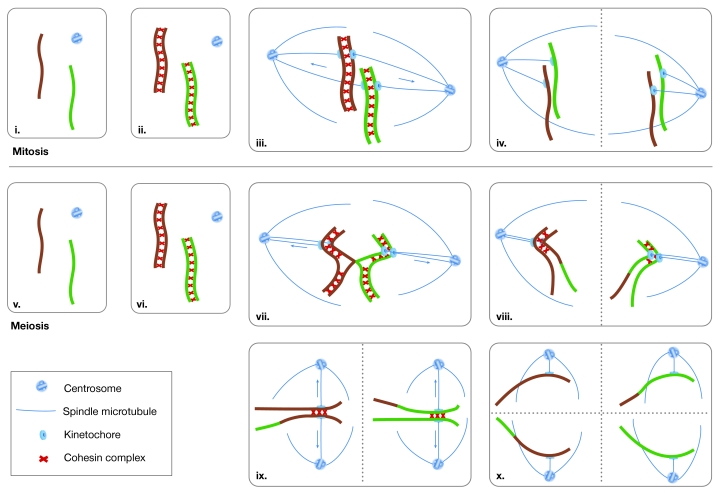Figure 1.
Mitotic and meiotic chromosome cycles. In mitotic cells, connections called sister-chromatid cohesion are formed during replication and hold the sister chromatids together until they are ready to be segregated at anaphase (i–iii). When the two kinetochores of a sister-chromatid pair attach to microtubules that emanate from opposite poles of the cell, the pulling forces of the spindle are resisted by the cohesion between sister centromeres (iii). The resulting tension stabilizes microtubule attachments. When all chromatid pairs have achieved this biorientation on the spindle, sister-chromatid cohesion is destroyed and the chromatids are pulled to the cell poles (iv). During meiotic prophase I, maternal and paternal homologues pair and become connected by chiasmata (v–vii). The combination of chiasmata and cohesion allows the homologue pair to be orientated on the spindle, similar to the way in which a pair of sister chromatids would be aligned during mitosis (vii). When cohesin is destroyed, the homologues are segregated (viii). A second round of segregation then occurs without an intervening round of replication (ix–x). Note that centromere cohesion must be maintained until the onset of meiosis II. Arrows indicate the directions of the pulling forces that are generated by microtubules. Dashed lines indicate the planes of cell division.

